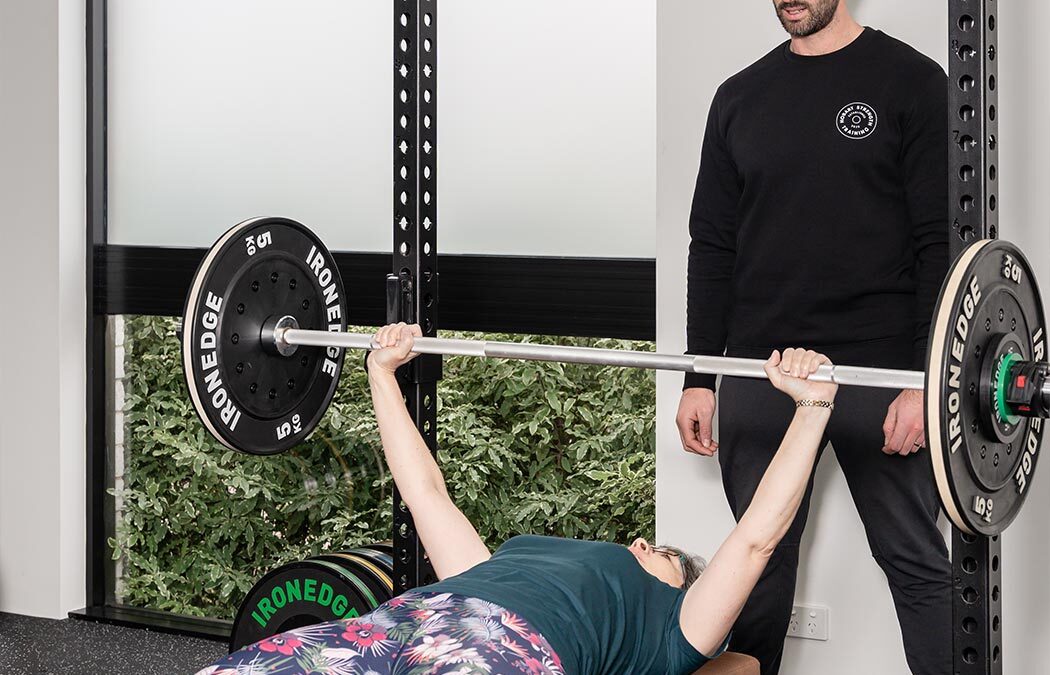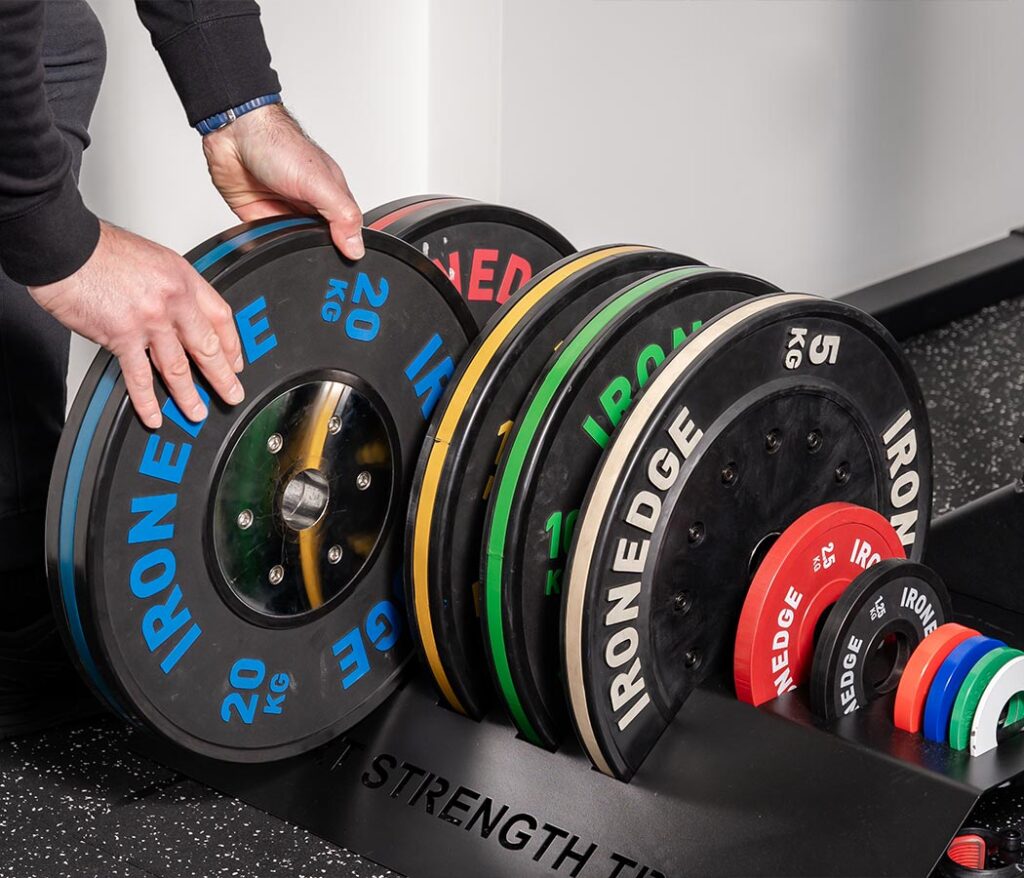Australia’s population is ageing, with 4.2 million people aged 65 and over making up 16% of the population in 2020. This is up from just 8.3% in 1970. By 2066, this group is projected to grow to as much as 23%, with those aged 85+ nearly doubling ¹. As more Australians live longer, staying strong and independent has never been more important. Yet myths still persist: “You should slow down as you get older,” or “lifting heavy weights is dangerous past a certain age.” These ideas aren’t just wrong; they can hold people back from one of the most effective ways to stay healthy. Strength training is safe, scalable, and one of the best tools for maintaining muscle, bone health, and independence. In this article, we’ll answer three big questions:
- Is weight training risky?
- Does it improve health?
- Where should someone start?
Is Weight Training Risky?
Like any physical activity, lifting weights (“resistance training”) carries some risk however when done correctly, these risks are far lower than most people think. According to the National Strength and Conditioning Association’s position statement, resistance training is safe for healthy older adults when proper technique, progression, and supervision are applied. Additionally, the risk of injury is much lower than the prevalence of frailty in people older than 65 years which ranges 7.0 to 16.3% and increases with age ². The key is not avoiding effort but managing it wisely. That means:
- Learning correct technique with guidance
- Starting with loads appropriate for your current strength
- Progressing gradually in weight, reps, or sets
- Paying attention to recovery, nutrition, and sleep
In fact, the bigger risk is not lifting at all. Conditions like sarcopenia (age-related muscle loss) and osteoarthritis contribute to frailty, falls, and loss of independence. Resistance training directly counters these ³.
Does it improve health?
Resistance Training is overwhelmingly good for health. It strengthens muscles and bones, improves balance and coordination, and protects against chronic diseases. Research shows older adults can build muscle mass in as little as 6–9 weeks, with increases in both endurance-oriented (type I) and force-producing (type II) muscle fibres ². The benefits are more than physical. Resistance training boosts independence and mental health ⁴. It’s also a proven intervention for musculoskeletal conditions such as low back pain, which is the leading cause of disability worldwide ⁵, ⁶. As discussed, lifting weights is safe, but let’s be extra clear: heavier loads are not inherently unsafe. No none looks at a pair of light 1kg Dumbbells and winces, but what about those bars loaded with heavy plates? Evidence shows high-intensity strength training, even at 80% of someone’s maximum effort is safe and effective for older adults when supervised and progressed appropriately ².
Where should someone start?
This one is simple to answer: If you aren’t already, start today. Everyone across their lifespan should resistance training. Children, adults, and older individuals can all safely engage in resistance training when programs are matched to their abilities. Age itself is a poor predictor of capacity and older adults are not inherently fragile. Many are simply undertrained. Therefore, older adults should not be limited to tokenistic, light-resistance programs with no progression. We see daily individuals pushing themselves to new personal bests, no matter their age and here’s how:
- Heavy, slow resistance work (around 60–85% of estimated max)
- Explosive, lighter movements to train power and coordination*
- Progression over time in load, reps, or sets, starting at 2 – 3 sets of 6 – 15 reps for all major muscle groups
- Individualisation based on injury history, preferences, and goals
- Modifications when pain, injury or limitations crop up, not stopping training altogether.
Importantly, the principles of good training such as individualisation, progression, and consistency apply at every age. Lastly, a quick point on explosive training: As we age, muscle power declines faster than muscle strength. This loss of power is closely linked to falls and loss of independence. Research shows resistance training can improve muscle power by 14–97%. Power training is most effective when done at a high speed with lighter weights. Even simple exercises, like moving a fast press or quick bodyweight sit-to-stand count if the intent is to move explosively. This improves the rate of force development (RFD), which is strongly tied to balance, function, and fall prevention.
Age stronger
Getting older doesn’t mean slowing down, in fact, it should be quite the opposite! Strength training and power work are not just safe for older adults, they are essential for maintaining muscle, bone, and independence. Starting light, progressing gradually, and moving with intent can build strength at any age. After a foundation of strength has been built, explosive training can be weaved into programs to allow individuals to improve their RFD and further minimise the risk of falls. Your future strength depends on what you do today. Don’t wait if you’re looking to be Stronger for Life. The best time to start was yesterday, the next best time is now. If you want expert guidance to build strength safely and stay active for life, book a session with us and start ageing stronger today.
References:
- Older Australians, Demographic profile – Australian Institute of Health and Welfare
- The Journal of Strength & Conditioning Research
- pmc.ncbi.nlm.nih.gov/articles/PMC5127276/pdf/nihms-824129.pdf
- Benefits of resistance training in physically frail elderly: a systematic review – PubMed
- Musculoskeletal health
- Well-Being, Self-Efficacy and Independence in older adults: A Randomized Trial of Occupational Therapy – PubMed

